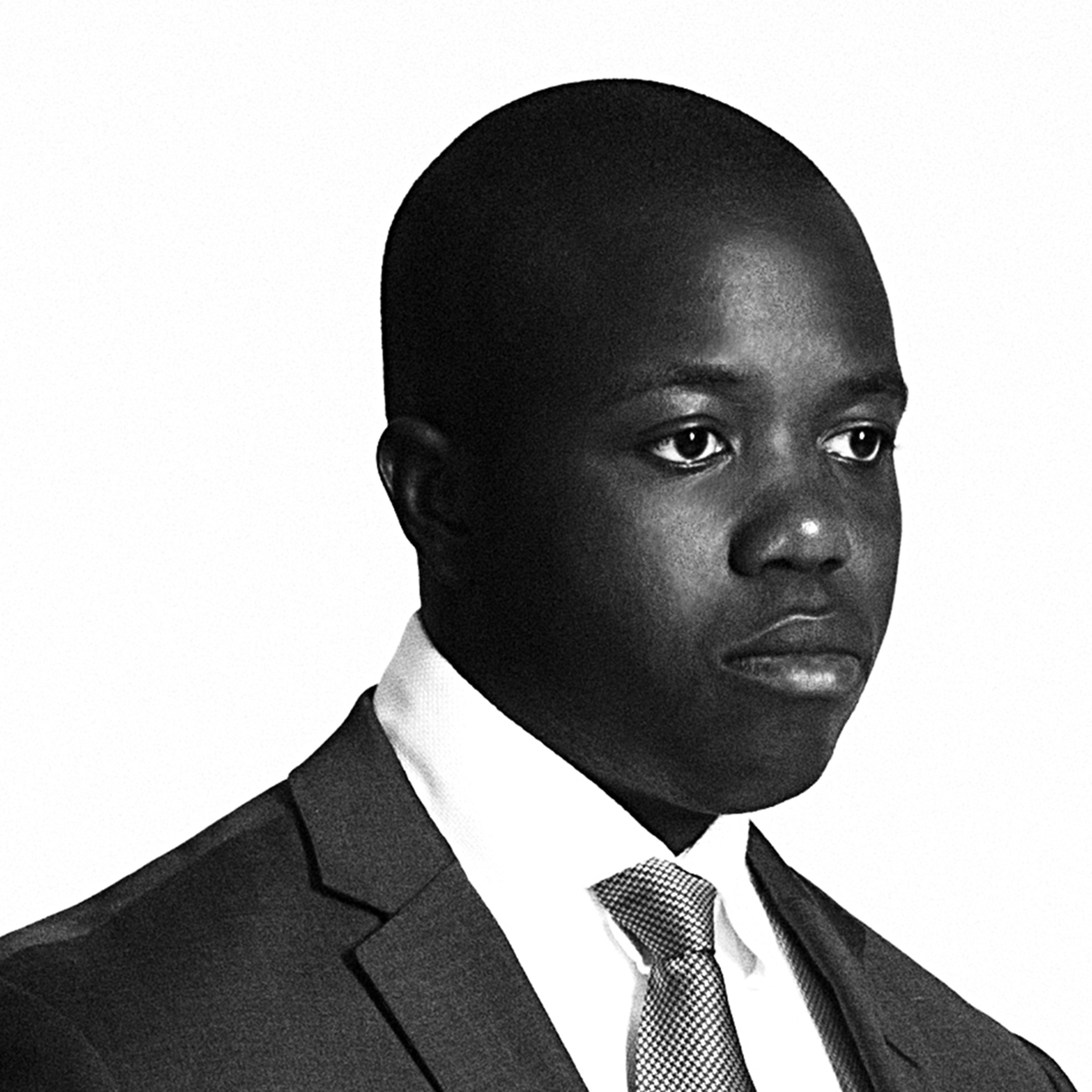This interview has been lightly edited for clarity, and all photos are courtesy of Ariel Garten.
Ajani Charles: How are you doing, Ariel? And how have you been navigating and interpreting the COVID-19 pandemic?
Ariel Garten: I am doing well. How are you?
In terms of how the pandemic is hitting us: We are learning tremendous lessons through this difficult and unprecedented time. Of how interconnected we are, and interdependent. Of the value of social interaction, of one person’s actions affecting another, of how we all band together as a society to protect what we collectively hold dear. That we are putting human health over the economy — a rare moment of leaders collectively making that choice.
For me, it’s been a radical lesson in acceptance. Of a new way of being, interacting, financial position, emotions, and uncertainty. I’ve been focused on ensuring my family is safe, and beyond that, truly enjoying the day-to-day.
I’m grateful for the time spent with my child and husband, and so deeply grateful for the simple things — fresh food, frozen peas, and a backyard, that I so easily took for granted before.
I’ve found lots of moments of beauty and humanity. I’ve also been helping others all I can — sharing techniques to calm the mind and body, the science of how our amygdala makes us fearful, and how to shift it. I’ve also been donating food and money and acts to people in need directly through a local Toronto Facebook group called Caremongering Toronto.
Ajani Charles: I am doing well, and I relate to much of your experiences in relation to COVID-19.
This is a truly unusual and disruptive time, I am grateful for tools like mindfulness, stoicism, meaning, and gratitude for supporting me on a daily basis, and I have learned a lot about myself, humanity, human nature, and how fragile many of our systems were and still are.
I was reviewing some of my notes from an Economic Club of Canada event that featured Barack Obama this year, and we can certainly benefit from great leaders like him during these times — leaders that predicted many of the challenges that we are presently experiencing.
Ariel Garten: Amazing. I saw Michelle, when she was here at Elevate.
Ajani Charles: What did you think of that?
Ariel Garten: I’m really interested in the way that she has created her character, to be so open and approachable is amazing.
I’m a mom, so when the first lady can relate to all of the problems that you have in your daily life and therefore can be a positive role model and hero for change. That is extraordinary.
You never get the impression that she is a woman who lived a presidential life in a way that you cannot connect to and relate to. And in that there is a ton of power for how she can inspire the world.
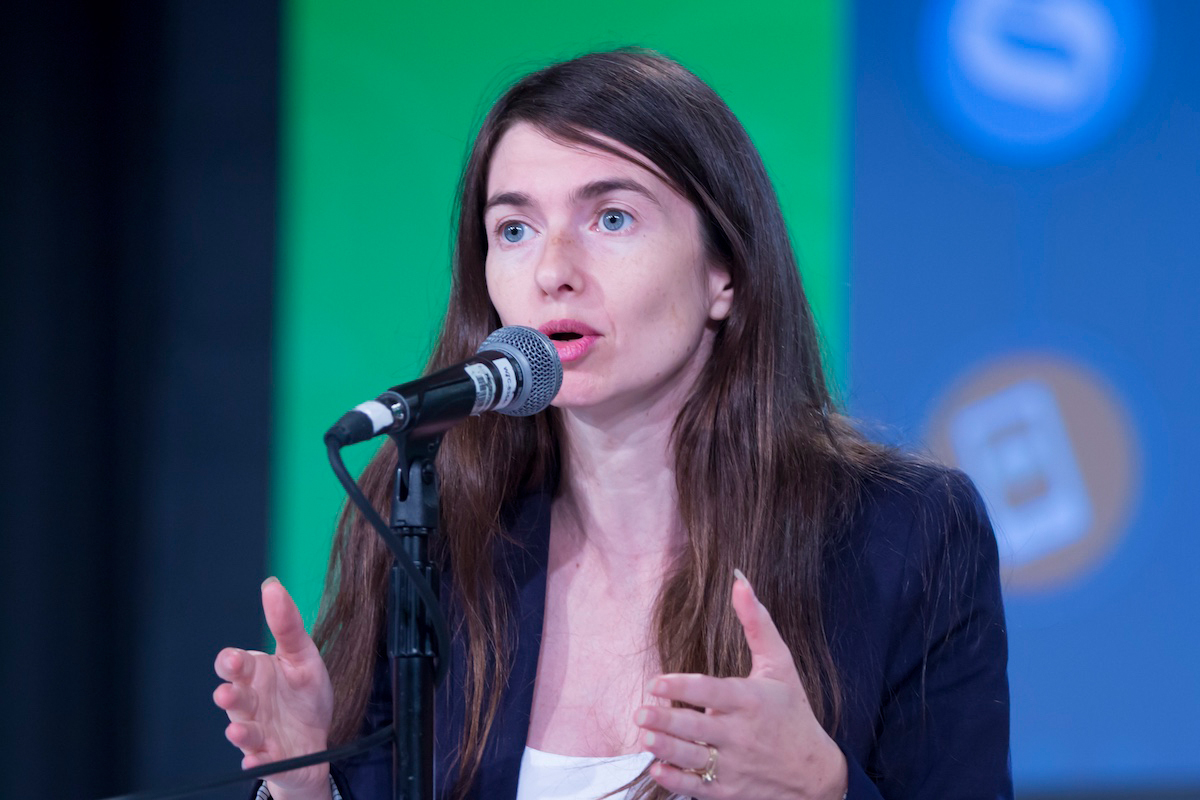
Ajani Charles: I’m not sure if you remember, but you and I met at Elevate, and the content of your presentation was amazing and applicable to my day-to-day life. But what struck me was that you came to Elevate with your mother, because very few speakers and entrepreneurs at Elevate showed up with family members.
So, what was your childhood like? And what was your relationship with your mother like as a kid, and how has it influenced your career and your work with InteraXon?
Ariel Garten: So, my relationship with my mom is amazing. My mother’s an artist, and from her, I learned that you can really imagine and create anything you want in the world. If you can bring it into your mind, you can bring it into this world.
My mother would have these big blank canvases and she would have incredible colorful paintings on them, that would bring beauty and life to the world. So, from her, I got a sense that anything’s possible, and that art is essential for the way that we exist. And that an appreciation for the beauty of the world and the beauty of humanity is fundamental to our living, and that we have a duty to create beautiful and transformational things.
And so, that’s what I learned from her growing up in terms of our relationship. Now. I’m 40, and she’s probably 66 or 67. And it’s amazing. She’s always been a supportive mother. And very, very loving.
I realized recently that I had the gift of unconditional love from her, even though I may not have totally recognized it growing up. Until recently, I was able to sit there and feel the fact that I was unconditionally loved and have that sensation of love fill me fully. And with that sensation of love inside me, I felt completely invincible. It was quite amazing.
And now that I’m a mother, I seek to teach my son, and care for and engage with my son in the same way that my mother has cared for, and engaged with me, which has always been supportive. And now, the rules are starting to change a little bit as I am learning how to care for her in different ways and support her and make sure that she has what she needs.
Ajani Charles: Amazing. How did you realize that you were given the gift of unconditional love when many people around the world have not been given such a gift?
Ariel Garten: Oh, maybe they don’t feel like they’ve been given that gift. A lot of people when you go deep into the core of motherhood, many, many, many, many, many people have actually been given the gift of unconditional love from their parent. They just didn’t recognize it.
Maybe the words that they heard their parents say made them believe or feel like they didn’t have it. Whereas if you actually ask a mother deep down, many of them will say that they gave unconditional love.
I had an incredibly loving mother and undoubtedly received unconditional love, yet I felt like love was a bucket that still needed to be filled regularly.
One day my husband asked me, “Why are you asking for my approval?” And I said, “I’m not. Oh, I am.” That’s weird. Why do I feel like I’m lacking? And I really stopped and I focused on it. And I recognized I was asking for approval because I was asking for love, and approval equals love, and I went back into my childhood thinking, and it still felt like love could be taken away or I had to be a good girl to know that I was loved or I needed to act appropriately so that I was loved. And that always kept me feeling like I wasn’t unconditionally loved. And I stopped and I really, really thought about it and focused on it, and came to the clear logical understanding that I was loved, and from there allowed my body to feel it and to anchor that feeling of unconditional love in my stomach, and I gave myself the permission and awareness to feel it.
And from there it was just like a light bulb went off, it was like the switch flipped and my whole base level of anxiety just dropped to cool. Everything was okay. Because the seeking for love is such a deep drive and yearning that it creates anxieties and insecurities.
And when I recognized that that unconditional love was a gift I had been given by my mother, and I didn’t need to keep asking for it over and over again, I just had it, that was it. I got the gift, and it was done. The bucket was filled, and there was no hole in it. Everything changed.
Ajani Charles: That’s incredible.
Many people never experienced that, and never come to that realization. I’m wondering, before you came to the realization that you were unconditionally loved, were any of your accomplishments based on the premise that you weren’t unconditionally loved?
Ariel Garten: I don’t think so. I mean I have always been doing for the sake of the interesting thing I’m doing. If it’s a problem that needs to be solved or a thing that needs to be made or a thing that I can see that’s so cool, I need to figure out how to make it exist.
But, when I would look at my micro-interactions with my husband, for example, I could be doing small things and he would say, “Why do you need my approval?” Or he would get mad at me for something that I was frankly doing wrong, like incorrectly loading the dishwasher in an inefficient way.
And when he would point things like that out, I would feel bad and a small part of me would feel insecure about the existence of love at that moment because I felt like I needed to do the right thing in order to be loved.
And so, in these domestic moments, it became really obvious to me that this subtle fear of not being fully loved made me feel insecure when I would do something wrong, which then leads to all sorts of defensive behaviors like “that wasn’t wrong, it’s fine. I’m cool. It’s all good.”

Ajani Charles: I can definitely relate to that. Speaking of which, at Elevate, you were talking about some of the tools that you personally use to challenge maladaptive or unhelpful beliefs and thought patterns. Can you tell me more about those tools?
Ariel Garten: Tools to challenge maladaptive beliefs and thought patterns? Sure, there’s lots, there’s many. And meditation is really one of the key tools.
There are lots and lots and lots of tools. I could probably go on for two hours.
Start with meditation because that’s one of the more obvious ones and understandable ones.
So, in meditation, what you learn is that you are not your thoughts. So, first, you learn that you don’t have to simply think the thoughts that are in your head because your brain is always generating thoughts, they are just happening in your head, and you think, that’s what I’m thinking, this is who I am. These are the thoughts that I have.
But often these thoughts are maladaptive. They’re repetitive or negative or actually based on false promises, beliefs, and we just repeat them to ourselves, and we’ll believe that they’re true or that we should follow them or give them meaning just because they are in our heads.
So, with meditation, what you learn is to take your mind off of thought and put it on something else. And it’s a very simple action. You notice that you have a thought, and then you choose to take your mind off it and put it on something neutral, like your breath. And when you do that, amazing things happen.
One is you all of a sudden change the relationships to your thoughts. You don’t have to have the thoughts that are in your head, you can actually choose which thoughts you think about, you can choose the contents of your own mind.
And then when that happens, the next step is often you recognize that you are not your thoughts. You often assume that all the thoughts in your head are you, but no, you can actually choose the thoughts in your head, you can direct where your mind goes. You are not your thoughts. And if you’re not your thoughts, then often you are not all the stories that your thoughts have told you about you.
So meditation becomes one of the really fundamental tools to identify, challenge, and change the maladaptive thoughts in your head. And another element that arises from meditation is the act of metacognition, the ability to rise above your thinking, not be stuck in it, but rise above it, and see the process of your thinking.
And the ability to see the process of your thinking leads to the path of liberation that I described, you know, seeing your thoughts.
Another great aspect of meditation is it allows you to break the relationship between your thoughts and your feelings. So part of why thoughts can be very maladaptive is, for example, you have a fear response to something that probably is not actually that threatening. In my earlier example, I forgot to turn on the dishwasher. My husband got slightly miffed and therefore I saw it as something big.
Ajani Charles: That seems like a big leap.
Ariel Garten: Totally. It absolutely does not help you. And when you forget to load the dishwasher, and somebody gets displeased, your amygdala starts to fire, and that is a part of yourself that is always scanning for danger.
And so then your amygdala creates an emotional response in your body that tells you this is important and you should be afraid. The amygdala says that we shouldn’t block this event, it is fearful, which then triggers more fearful thoughts, which then triggers more fearful sensations in your body and on and on.
And so, in trauma, that fear trigger loop can be very, very intense and the slightest thought can trigger an immense physiological reaction and can lead to disease, more thoughts, and then more physiological reactions.
So the feelings that you have in your body reinforce the maladaptive thinking. So, for example, you’re at a party and you think “Oh, nobody here likes me” is the thought that you have in your head. When you walk in. So, you walk in with that thought in your head, you start chatting with people, but you think nobody likes you. So you’re sort of withdrawn and you’re not saying that much. And people, they say hi, and they’re walking by and you’re not making eye contact with anyone. So eventually they’re not coming to talk to you and now your fears seem to be validated and you feel terrible. So the feelings that you have can be used to validate what you consider to be a reality.
I’m feeling this way, therefore it must be true. And that happens all the time. That’s one of the dangerous aspects of anxiety, that we have a fear response and we feel it in our body and we really are sure there’s something terribly wrong because it feels so awful in our body, even though generally everything’s quite fine.
So in meditation, what you’ve learned to do is break the relationship between your thoughts and your feelings. So that you can have a sensation in your body, and you don’t make a big deal of it, you don’t make a big story of it. You don’t say this validates what I’m experiencing in the world.
Instead, meditation helps us say I’m having sensations and sensations in my body, and it doesn’t trigger all thoughts around it. And you break the downward spiral of thoughts and feelings.
So those are some of the ways in which meditation can help you challenge and overcome maladaptive thinking.
Ajani Charles: That’s brilliant, I can totally relate to everything that you described, based on my own experiences and the ways in which my meditation practices have helped me to transcend childhood trauma and the stories that seem so real.
Now, of course, I can become reactive within my own body, but I have the metacognition that you speak of to recognize that these are things that are stemming from the past and they may not have any relevance to the present moment.
Ariel Garten: Yep, I’m curious a little bit about your story actually.
Do you mind sharing a little bit? You keep popping up in my e-mails, and I met you, and you seem to be doing interesting things. Do you mind sharing your story a bit?
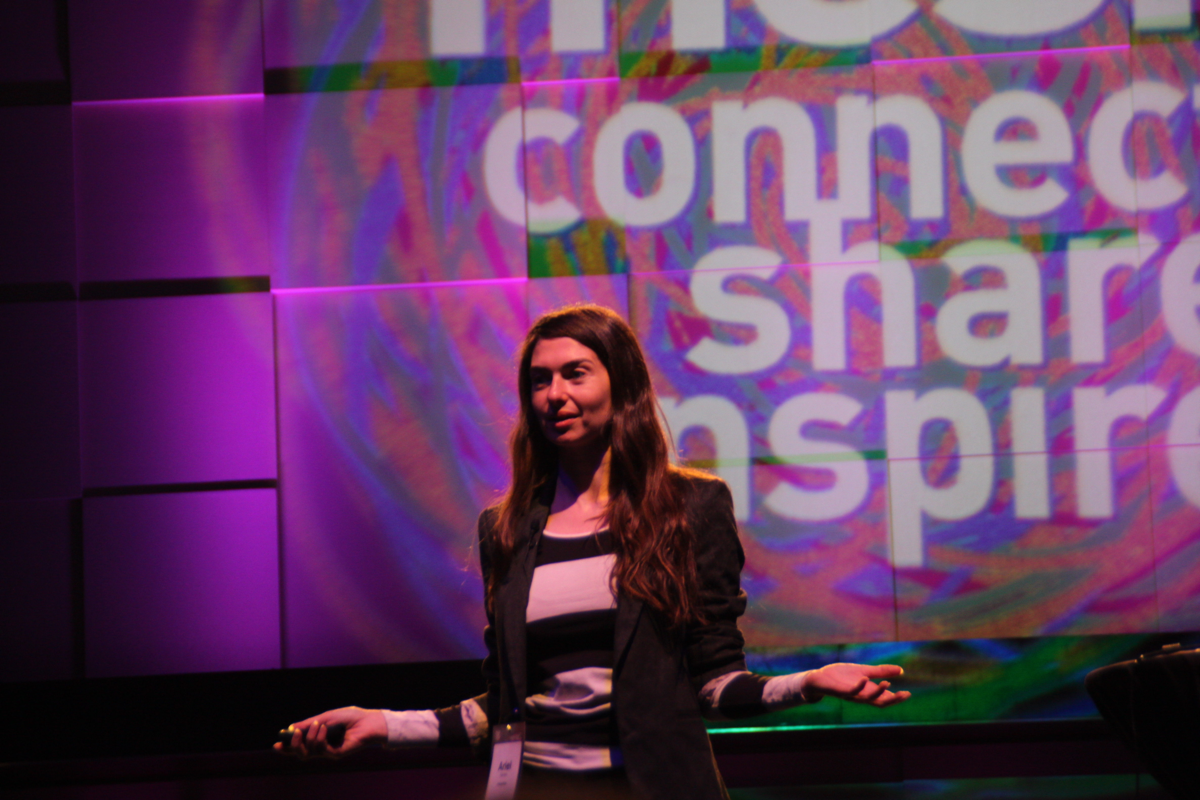
Ajani Charles: Sure, I’ll do my best. Like all human beings, my life story can be very complicated, and I’ll do my best to keep it short since we don’t have that much time left.
Basically, I was born in Montreal, to a Haitian family. My dad is semi-retired now, and he was a professor of literature and African Studies. My mom is a psychiatric nurse. We moved to Haiti from Montreal when I was four years old. From there, I moved to North York in Toronto.
I’ve always been artistically inclined, I’ve always been a visual artist, so my parents recognized this when I was 1 or 2 years old, and at the age of nine, they had me audition for the Claude Watson School For The Arts. That was a great experience.
In the fourth grade, through The Claude Watson School For The Arts, you’re in a generalized program basically, but as you progress from the fourth grade into the fifth grade and so on, you choose a major and you start to specialize in a specific field or facet of the arts.
However, after the fourth grade, I felt so much anxiety from being displaced from my first elementary school in North York, that I quit Claude Watson and then I started going to a normal middle school. But then in the eighth grade, I recognized that was a huge mistake.
So I believe that I am the first student to audition for Claude Watson twice and to get in twice because I auditioned in the eighth grade, I got in again, and became a visual arts major.
My love for photography began in the seventh grade before I rejoined Claude Watson. Basically, I took a photography course with adults at the Toronto School of Art when I was twelve years old. And that really inspired me, so when I was visual arts major in the Claude Watson arts program, my medium of choice was photography.
And I was highly involved in the arts and extracurriculars at Earl Haig Secondary School, which is where the Claude Watson Arts program is based at the secondary school level.
Ariel Garten: I tried out for Earl Haig and ended up going to Northern Secondary School. Yep.
Ajani Charles: Cool. So, I was president of the Arts Council, I was on the basketball team, the rugby team, the track and field team, I was in many clubs, I would be at school 12 to 14 hours per day. And in retrospect, that was a function of the anxiety and shame that I was perpetuating in my own mind.
I was very close to my father, and when I started the sixth grade at Cummer Valley Middle School, he abruptly moved overseas to continue working as a professor. So, I went from being part of a two-parent household and having a secure attachment style to living in a single-parent household and developing an insecure attachment style.
So by the time I got into high school, I was very depressed and anxious. And how I coped with that was through perfectionism overachievement. And excelling through sports and academia. And through the arts, of course.
Claude Watson students are always high-achievers, and they can be very perfectionistic and competitive. And I believe that I was a great example of that, especially given some of the trauma that I experienced which included and went beyond my father moving away.
So, I had an existential crisis by the end of high school, I got into the Massachusetts College of Art, OCAD, Ryerson, Sheridan, and many other schools in the United States and Canada for photography specifically.
At the time, I didn’t know if becoming a professional artist made sense for me. So instead, I ended up going to Western for philosophy. I thought philosophy would help me make sense of my career path. And I was just tired of all of the overachievement, and I was tired of pursuing the arts.
So, I basically took four years off of the arts. And I was just at Western studying philosophy and partying, basically. I felt that Western was a break from the neurotic overachievement that I was engaged in for so many years. But that was definitely one of the least healthy periods of my life. I did learn quite a bit though.
Anyway, through the study of existentialism, which was juxtaposed with the fact that “the real world” was coming, I decided in my fourth year of university to become a professional photographer, without pursuing it in a post-secondary institution.
As a Western student, I got into Ryerson a second time for photography. So, I was still flirting with the notion of becoming a professional photographer.
By fourth year university, I just decided to go about it in my own way. By the time I decided to pursue photography professionally, I had all this pent up creative energy because I took four years off of art, basically.
So from there, I just worked harder than I had ever worked in my entire life to become a successful photographer, based on my definition of successful.
Eventually, I diversified my career path and became a producer, director, and writer.
I had another existential crisis in 2014 and that’s when I became a mental health advocate, started studying different forms of meditation and yoga, and I started becoming far more introspective than I ever had been.
As of last year, I joined the Operation Prefrontal Cortex team. I volunteer at CAMH, I write a lot about mental health advocacy, I work with many leaders in the mental health space like Calm, I aim to add value to your amazing company, and I’m grateful to have contributed to the beta test of the Muse S. And that is basically the short version of my life story.
Ariel Garten: Thank you so much for sharing. Yeah, that’s really, really interesting. I keep seeing your name because you’re very good at bringing yourself into a scenario or being like, “Hey, here I am”. That’s impressive.
So, I was wondering, okay, what’s behind this guy? So, thank you so much for sharing yourself and your story, and I certainly can resonate with it.
You know, perfectionism runs deep. I grew up the child of an artist and I am an artist myself, and my mom and I used to joke that we were card-carrying members of Overachievers Anonymous. You’ll have to take yourself to Overachievers Anonymous meetings.
Ajani Charles: Right?
Ariel Garten: We are overachieving. But, we don’t need to push ourselves so hard. It’s okay.

Ajani Charles: Yeah, it has been one of the most challenging things for me to transcend and let go of, and it’s part of the reason why I write for Thrive Global, because part of Thrive Global’s value proposition is ending burnout. And I’ve had some extreme burnouts due to my perfectionism, and it’s just not good.
Ariel Garten: Yeah. And I also understand the drive to make that has driven my career choices. I’ve had a burning need to make. You have an idea and you just have to do it. You see this thing that needs to happen, and you make it happen.
The act of making and creating things of beauty or things of communication or things of transformations feels urgent inside of you. And that’s both highly productive and sometimes dangerous.
Ajani Charles: I know that from experience. And if you take that drive to create and perfectionism, and if they manifest in maladaptive ways, it can be even worse when you’re surrounded by people who are like that too.
Ariel Garten: Totally, my husband went to school for VFX. So he’s worked in film for the last 10 or 15 years. And he went to Sheridan for animation. And it is such an incredibly competitive place. It’s competitive to get into, and then when you’re there, it’s all about how good is your drawing? How good is your technique? How many hours have you stayed up to master this craft over and over and over and over and over again?
And my husband gets compliments. But to him, if somebody truly appreciates you, then they give you a critique because, for him, it’s always about getting better, better, better.
And it’s, it’s different from my mentality. To him, he’s psychologically resilient to it, that’s what makes sense to him. If I existed in that environment, I would be crushed.
Ajani Charles: I understand, but “better” as you know, is an arbitrary concept.
Anyway, I appreciate you asking about about me, and how I came to interview you in the first place. So, thank you.
With that said, how did you start to meditate and what is your current relationship to meditation?
Ariel Garten: Sure. So, I played around with meditation when I was really young, I was curious about the mind and curious about this thing. But I didn’t know how to do it, I would see signs up for meditations at the Buddhist temple and sometimes as a teenager, I would go on my own and just sit there, and really not know what to do.
I did know that I was engaging in something that was special though.
After university, I trained as a psychotherapist, and then opened my own private practice, and then I went through formal training for meditation, more appropriate training for meditation, and mindfulness.
We’re at that point, meditation is becoming a really popular front line approach for depression and anxiety and other things that you would see in your therapy office.
And so that’s how I first learned what to do during meditation, what you were supposed to do, but even at that point, I was a terrible meditator. I would sit there, I would try to meditate, my brain would bounce all over the place, and I would be frustrated with myself for not doing it well. And I would just get up and not feel like I was able to do it.
So I’d be teaching my patients to meditate and guiding them through meditations in the office, but I myself really didn’t have a meditation practice. And it was not until we started building Muse as a meditation tool that I was finally able to establish a practice myself.
It was through using Muse as we were building and testing it early on that I was able to go, ah, this is the experience that I should have been having. This is what it feels like to meditate and I was able to actually stick with it and stay in my focused attention and not be frustrated by my distracted mind.
Viscerally I was understanding what it was that I should do during my focused attention practice. And that was the thing that started my practice. And now, six or more years later, I have a regular meditation practice with and without music that has so many pieces to it
So, you know, I meditate with mind, with heart, with breath, with body. And then there are all the guided meditations that can fit into really any problems you have in your life. It’s like, oh, we have a guided meditation to help you find calm through a process.
But I also experiment with a ton of other meditation techniques for finding love in my heart while facing fear. And really meditation, as you know, at this point, is not just something that happens on the mat. It is translated into mindfulness and awareness of being mindful throughout my day.
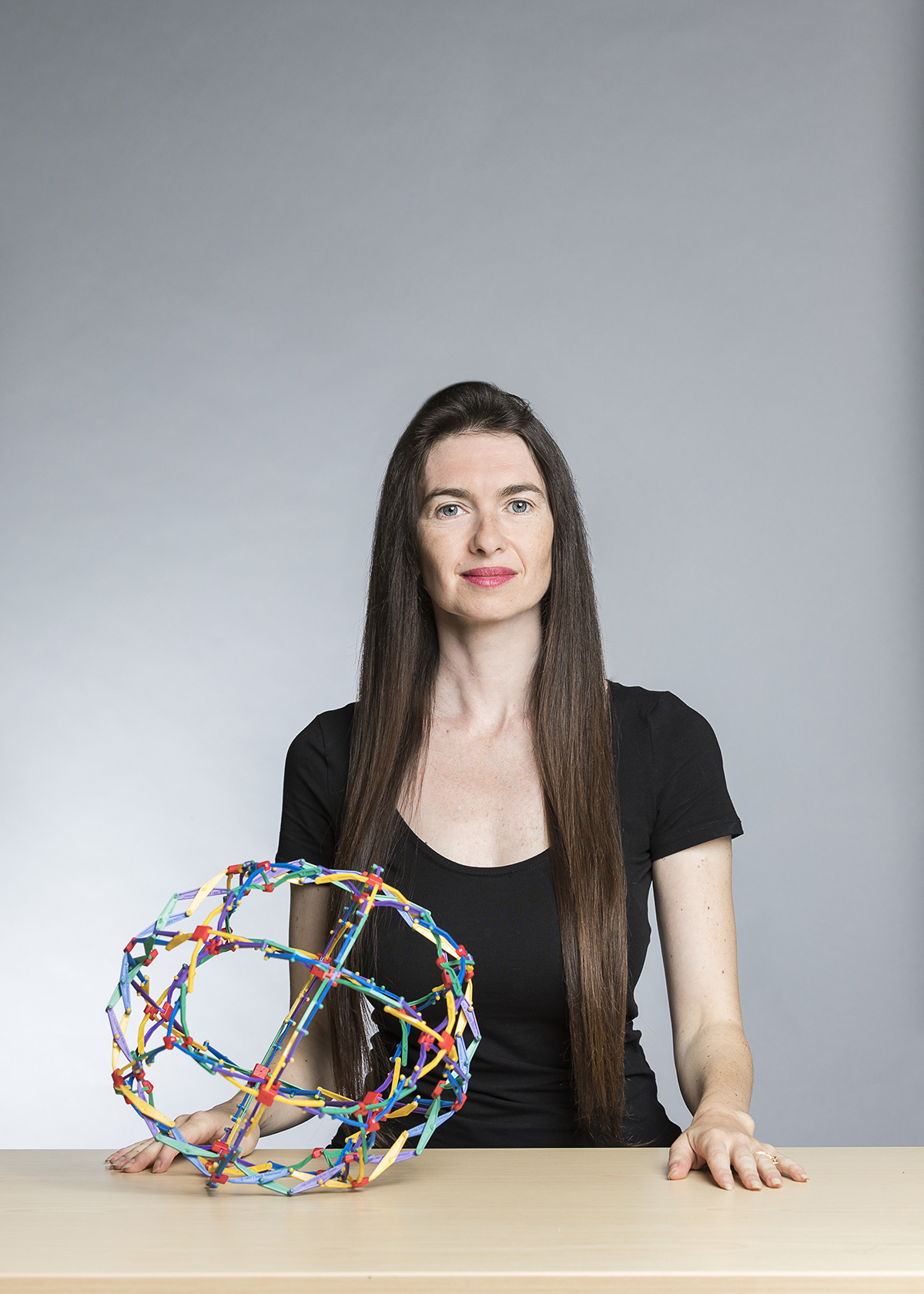
Ajani Charles: That’s amazing.
I love how you’ve been able to diversify your meditation practice after being inspired by your own product. And, speaking of which, you mentioned that you were at the consumer Consumer Electronics Show in Vegas, where you and your team unveiled the Muse S.
So, what was that experience like for you? What type of feedback did you receive? And what does the Muse S mean for your company?
Ariel Garten: We knew that people loved to meditate with Muse, and when we started to talk to people and find out about the various user cases, we recognized that people were using it to help them fall asleep.
They were using it at 10 PM. That was one of our most popular times, immediately before bedtime. And so we recognized that we have the opportunity to build a purpose-built device that could really help support the process of falling asleep.
So, the Muse S is the most comfortable Muse ever. It’s a flexible headband, with soft fabric that’s packed with sensors.
So there’s an accelerometer, gyroscope, and more. And with that, we’re able to give people all of the features of Muse meditation, mind, heart, breath, and body with real-time feedback as well as a massive content library.
And it comes with responsive go to sleep journeys. So the responsive go to sleep journeys guide you, as you’ve experienced. They guide you to sleep with this beautiful guided meditation and response to the soundscape created from your own body.
And the analogy that we like to use with it is just in the same way as a parent might help a child go to sleep and teach a child to go to sleep by reading them a bedtime story.
And as they do, the child’s eyes begin to flutter, and the parent lowers their voice. And as the kid’s breathing slows down, the parents’ breathing slows down, which then causes the kid’s breathing to slow down even further in this little cycle. And when the child is asleep, the parent shuts the book and walks out the door. So the same way, the responsive feedback created by the Muse S from your own body is pacing and leading you to guide you into support in a way that’s designed to be more effective. So, it is amazing that we managed to create that experience.
What it means for us is that we’re now able to help people manage their mental state, both in the daytime and as they’re falling asleep, and then as a result potentially be in a better mental state during sleep.
So mental health is a 24-hour experience. If you don’t sleep well, then the next day you have poor cognition and poor emotional self-regulation and chronic lack of sleep can lead to depression, or worse.
So, through helping people learn to manage their mental space to shut down the racing mind so they can fall asleep, learn to manage their physiology more effectively, being able to learn to breathe deeply to slow their body to slow their heart rate. It can guide you into sleep in a better state.
So you end up having a potentially deeper, more restful sleep and wake up with a greater level of cognitive clarity, which then allows you to do better at the task of observing and managing your mind and emotions so that you are then in a better position to fall asleep that night.
Ajani Charles: That’s fantastic. It seems that there’s a compounding effect; the better sleep you have, the more you’re able to concentrate and have healthy relationships with yourself and others, but the less sleep that you get or the less good sleep that you get, the compounding effect seems to work in the opposite way. Your relationships with yourself, others, and your work can become degraded in very shocking manners.
Ariel Garten: Yeah, and when you really look at the stats of the amount of productivity that’s lost due to poor sleep, the bad decisions that are made due to poor sleep, the number of accidents that happened due to poor sleep, you can really see how poor sleep really effects one’s mental and physical capacities and capabilities and can lead to a downward spiral throughout the chain.
Ajani Charles: Absolutely.
So, based on your experiences at CES, how do you foresee the evolution and intersection of healthcare, mindfulness practices, wellness practices, and technology over the course of the next ten years?
Ariel Garten: That’s a great question. I also realized that you asked me how did the launch go at CES? Correct? I will answer that question first.
The launch at CES was amazing. We launched an event called Unveiled, we had a ton of press coverage. I think we had 87 articles on us, including places like Forbes TechCrunch, Mashable, an online course magazine, etc. So that was really cool.
When we look at where we are moving in the future between mindfulness technology, etc. we’re at a place where everybody’s beginning to understand that mental health is health. And we’re beginning to tease apart the mental illness and mental health stigmas.
Up until now, most people really got scared when you used the term mental health because it suggested mental illness. And there’s beginning to be the understanding that mental health is simply about living your own best life in your brain. And that people really are looking for the tools and techniques to manage stress and emotional reactivity. And all of the general wellness components as well as mental health issues.
Methodologies like CBT and DBT can be effective for addressing many mental health issues, and so we’re starting to see a lot more mental health tools available on technological platforms.
There’s a lot of CBT apps that are available now, making the best-validated tools for anxiety and depression available to everybody. We are even starting to see things like a DBT startup in Toronto that probably has one of the first DBT based AP tools, which is great.
DBT is Dialectical Behavioral Therapy. And dialectical behavioral therapy teaches you to work with and manage your emotions in a different way than CBT or Cognitive Behavioral Therapy.
And so, these are just the beginning stages. We have devices like ours, Muse, that can track your mental state and help you with focus and relaxation. And where I think we’re evolving is to having more persistent technological tools that are not just there as one-off interventions that you sit with for once a day, but instead evolving into coaching or guidance that can help you and track you or encourage you throughout the day to stay on your mental health.
And I think we’re also seeing other tools like social media being hopefully leveraged positively to improve mental health in the future because we’re now starting to see the damaging effects that social media can have. So that’s another kind of horizon for how technology may be able to support the future.
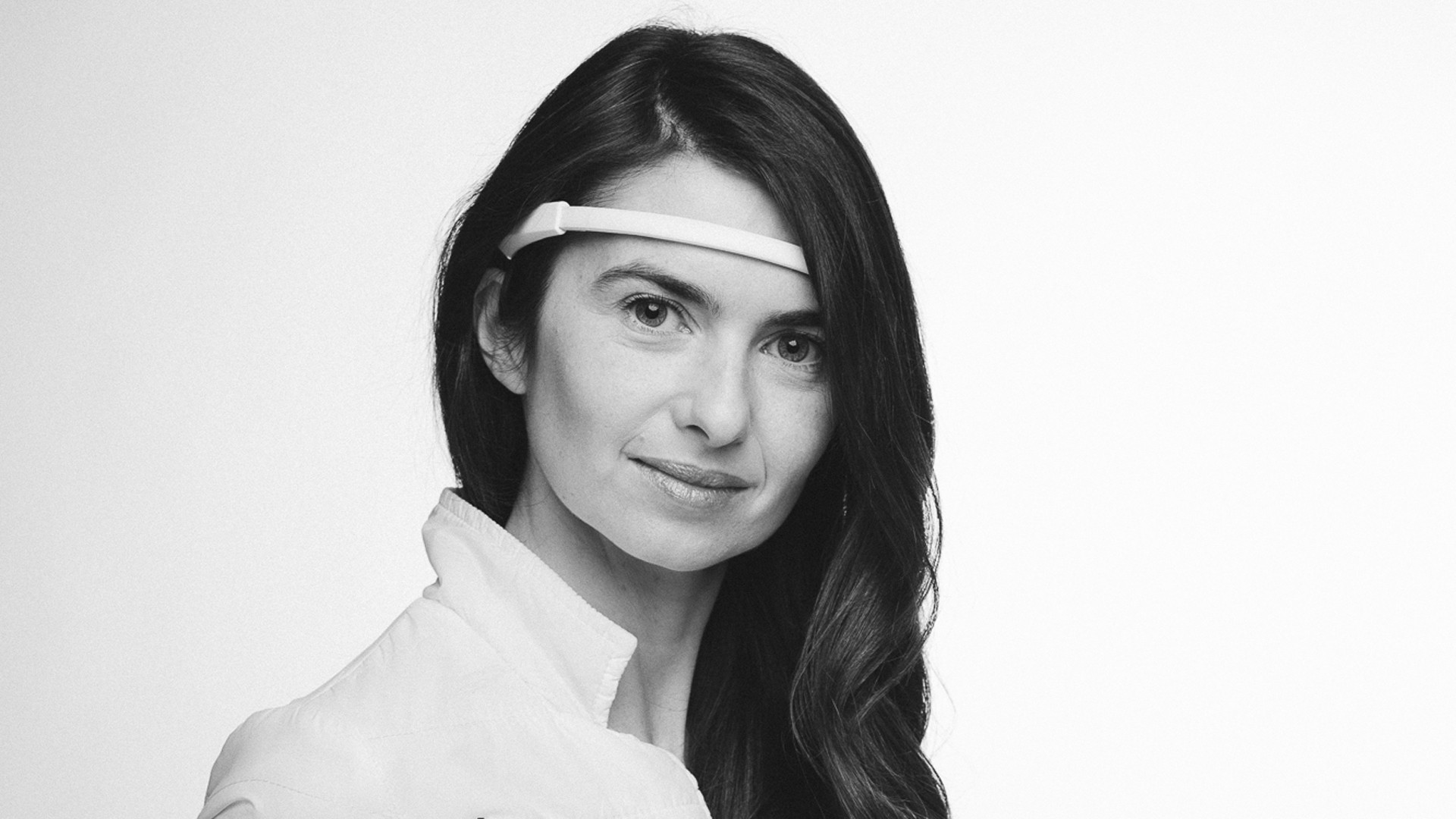
Ajani Charles: That’s an amazing perspective on it. And I think sometimes I can get in a cognitive bias funnel because I interact with, and speak to a lot of people like yourself that are advocates and practitioners of mindfulness and different tools that cultivate health, wellness, and introspection.
So, I can often delude myself into thinking that everyone, all the seven-plus billion people on earth are also interested in these different practices and tools. But that simply isn’t the case. And I would love to see them becoming far more popular, far more ubiquitous, moving forward.
Ariel Garten: I completely agree. That’s my mission. My mission is to help everybody understand that the shit that goes on in your head doesn’t need to make you feel bad.
But in the most basic way, there are things that you can do to manage the conversations that you have with yourself to improve your experience of yourself and your experience of interacting with others.
There’s a stat that says 85% of the world has low self-esteem. That makes me so sad. Devastating that 85% of the world is feeling a little bit shitty about themselves often or much of the time. Right now we are all these amazing, beautiful, and capable human beings.
Ajani Charles: It’s unfortunate because then we become our own worst enemies. That’s why I believe many people engage in different forms of self-sabotage, because they’re holding themselves back based on messages and experiences, usually from childhood.
And the amount of human potential that becomes squandered due to low self-esteem, shame, and a lack of introspection is unfathomable.
As far as the Muse S is concerned, I was shocked when I saw that it went live because, as one of the beta testers, we beta tested it somewhat recently. So I was very surprised at how quickly it entered the market.
So, I was wondering, what are your thoughts on that? And what is your relationship to fear and risk-taking?
Ariel Garten: This is now the fourth or fifth hardware version that we’ve released. So we’ve become pretty good at it. This was a project that has been planned for many years with an incredibly tight project plan and a lot of overlapping deliverables. And people really like working down to the wire to make sure that everything was good.
We got your feedback from the beta, we recognized there are a number of things that we could change within the short period that we had, and so we implemented quite a number of changes from what we’ve learned, and they felt pretty confident when it went out.
We felt that we had a good product. And we knew there’s going to be things that you learn once it’s in the market. But we felt confident that when people would receive it, they would feel like it was a value, that it was helping them, and improving lives.
And we knew fundamentally the Muse S experience that came with it, that we built, that’s been in the market for years now and tested and refined, we’re always sending updates.
So, we know there’s risk involved, there’s risk along with the entire project, and we’re working on tight deadlines, you just have backup plans and backup plans for your backup plans so that you can make it to the end game.
Fear, I talk a lot about fear lately. We got such positive feedback from the beta that it was really that that which allowed us to feel sufficiently confident to put it out.
Had the beta not come back so positively, we would know, we would have held it back and not gone to market.
But that was the validation that we needed. It was sort of a final step to say yes, all the assumptions that we’ve made, the things that we’ve tested, the things that we’ve refined over and over and over again, it makes sense.
And there’s actually a ton of testing that went in before the beta. We constantly have people in testing. And so beta was kind of like the last moment with the large group of humans that weren’t us that could look like the consumer.
And so we felt confident that what we had was really good because people used it and said it was, and we just had to make a few changes. So, that was good.
In terms of my relationship to fear overall, it’s really changed. When I was younger, I felt like I didn’t have a lot of fear. I was really confident, then I went through a period of my life where I experienced a lot more fear, I had something that caused me to change my fear levels and feel more afraid, and then I started challenging that and recognized that fear doesn’t need to hold you back from anything.
Fear is very good at telling you scary stories, but they’re only stories, they’re not real. And I went through this practice of any time I would feel a sensation of fear that would be a reason to go and do the thing I was afraid of. That would be the thing that would tell me that you need to do this, to feel the fear, and the fear doesn’t need to rule you. So, my new motto is feel the fear and do it anyway.
Ajani Charles: That’s one of my favourite books. Have you read it?
Ariel Garten: I have not.
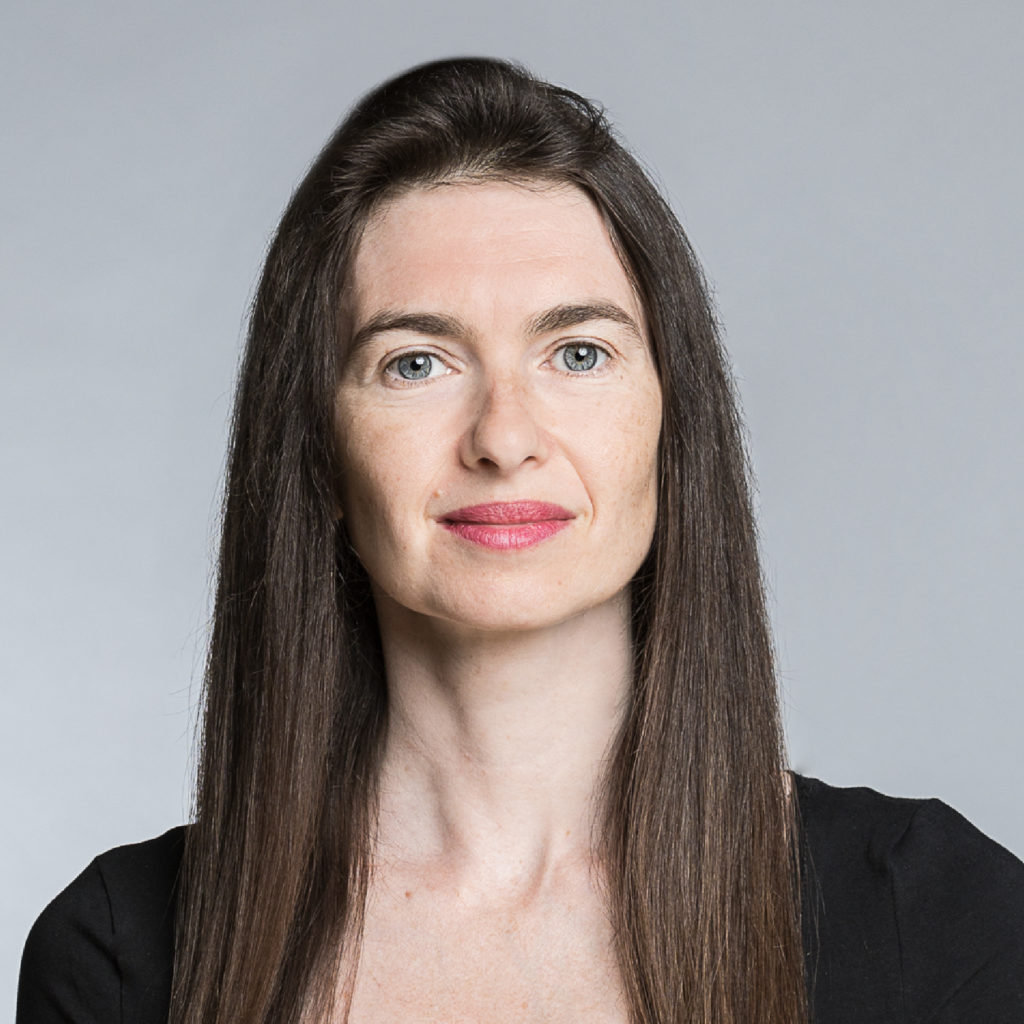
Ajani Charles: You haven’t read “Feel The Fear And Do It Anyway” by Susan Jeffers?
Ariel Garten: No. I’m ordering it right now. I just said the phrase because it’s the phrase that rolls around in my head constantly.
Ajani Charles: That is the ultimate book on transcending fears.
Ariel Garten: “Feel The Fear And Do It Anyway” by Susan Jeffer? On Prime order. I literally have clicked the Buy Now button. Okay.
Ajani Charles: Nice. So I just have a couple more questions to wrap this up.
Can you give me some insights into your role at InteraXon?
Ariel Garten: Sure. So, I was one of the founders, I was the CEO for seven years. On maternity leave three years ago, I stepped down, and I transitioned into the role of Chief Evangelism Officer. And my role as Chief Evangelism Officer is essentially to be a mental health advocate.
So, I get to share and communicate about the benefits of different mindfulness techniques, as well as contribute to the company, the product, the research, and all of our different directions. So it’s partly internal, doing what I love to do, and building things, and it’s partly external mental health advocacy work.
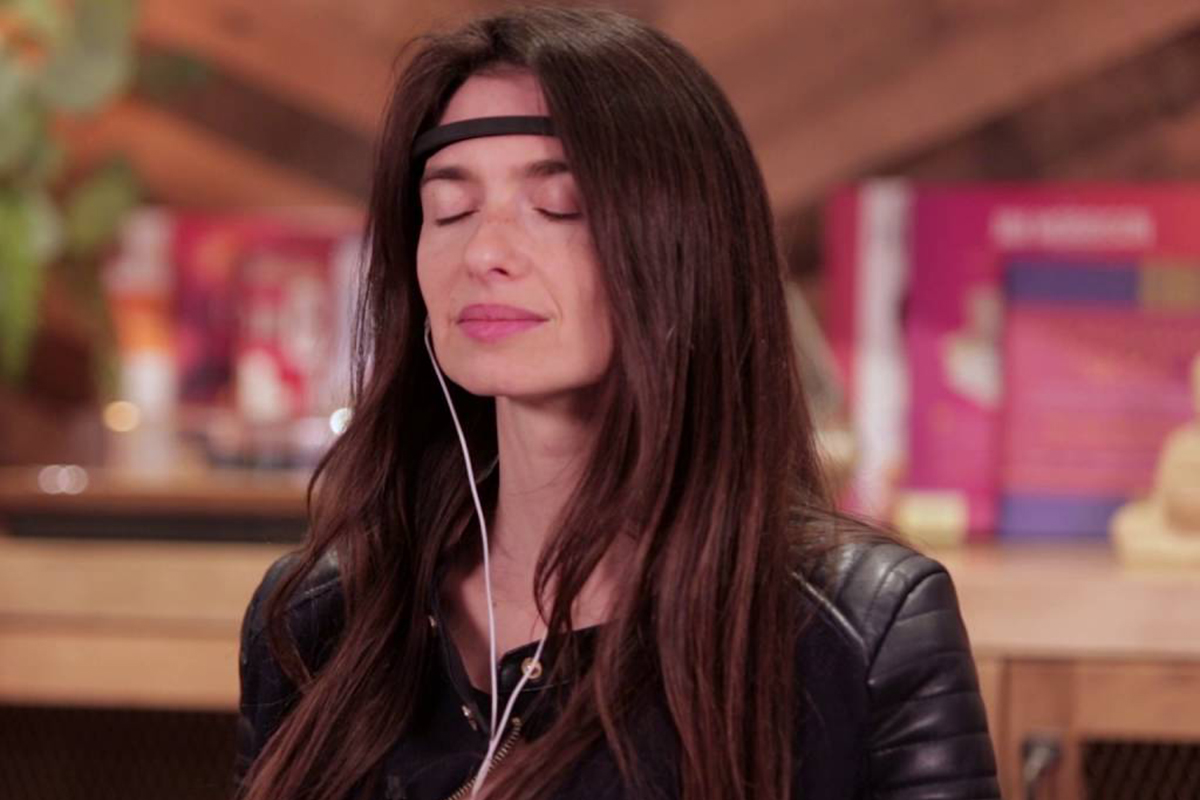
Ajani Charles: That’s great.
So, the tech world is notoriously fast paced, competitive, and the burnout epidemic that exists today seems to be amplified within the tech world.
So, how do you take care of yourself? How do you avoid or recover from burnout, and what systems are in place within InteraXon so that employees can also avoid or recover from burnout effectively?
Ariel Garten: So, at InteraXon we have a number of systems in place. One is four weeks vacation, so everybody in the company from the lowest to the highest staff member gets four weeks of paid vacation. On top of that, we have work from home. So long as you get your job done, you can do it from home. We understand that people have small kids and a life that happens, doctor appointments you have to go to, and then often working from home is a quieter and better environment.
You obviously need to come to the office to collaborate because cooperation is also key and, and the support that you get through collaboration is key. But we offer that flexibility.
We do weekly mindfulness together as a team. So, every Tuesday before our all-team meeting, we have different mindfulness practitioners from the community come in, or we have one of our internal mindfulness leaders run a 15-minute meditation.
And then everybody at our company meditates all the time, whether you’re meditating on your own because you choose to because you have a practice, or because you are doing research or testing for us.
And so you have to test our headbands all the time or you’re in Customer Care, and you need to try the devices that come in, or you’re in development so you’re, trying new algorithms experiences.
So there’s a lot of meditation that happens in our team. In addition, we always try to act mindfully and respectfully towards one another.
We have one another’s back, so you’re not out for yourself or directly trying to make yourself look good, and we value when you make another team member look good. We value when you support our environment, and highlight others’ achievements before your own.
It’s not a culture where you’re trying to rise to the top by squishing somebody else down. We all rise together, we all fall together.
Ajani Charles: Awesome.
Ariel Garten: And then we also have a very diverse team. So, we try to maintain 50% female across the various departments, including engineering and development.
Posts stay open longer than normal just to make sure that we’re able to get diverse candidates in.
On our executive team, we have more females than males. And that’s the balance.
Ajani Charles: That’s very uncommon in the tech world, for sure.
So, your professional background is really interesting. Not only are you a neuroscientist, but you’ve also worked as a psychotherapist. Now you’re basically a mental health advocate for your company. And you’ve worked as the director of a real estate development company and you were a designer and owner of a retail clothing store. So, how did all these different experiences influence your current career path and your work within our InteraXon?
Ariel Garten: So, I was always interested in both arts and sciences, and I always excelled at both.
I told you I tried out for Claude Watson at Earl Haig, but I ended up going to a gifted program, at a school where I could also do really strong science.
I also participated in the plays and made costumes for the school plays and on and on and on. I too was a very high achiever in high school, and then in university.
I was doing a neuroscience degree and got into the incredibly prestigious drama program at our school. And I always wanted to do both. And to me, both were essential.
Understanding the world from a technical perspective was fascinating, and so was creating experiences from an artistic perspective. And real estate was the family business. And so I learned business within the family business.
And my own kind of driving purpose was to try to make the world better in some way. And so all of those elements came together. The understanding of the brain, the desire to help people shift what goes on in their minds through psychotherapy, the scientific background, as well as the artistic and creative desire to make things that are compelling experiences.
Those all came together in the creation of the Muse with me and Chris Aimone and Trevor Coleman — the three co-founders.
We brought these disparate elements together to create a tool that is both based on amazing science and technology and is an incredibly emotional and visceral experience. We have created transformational products.
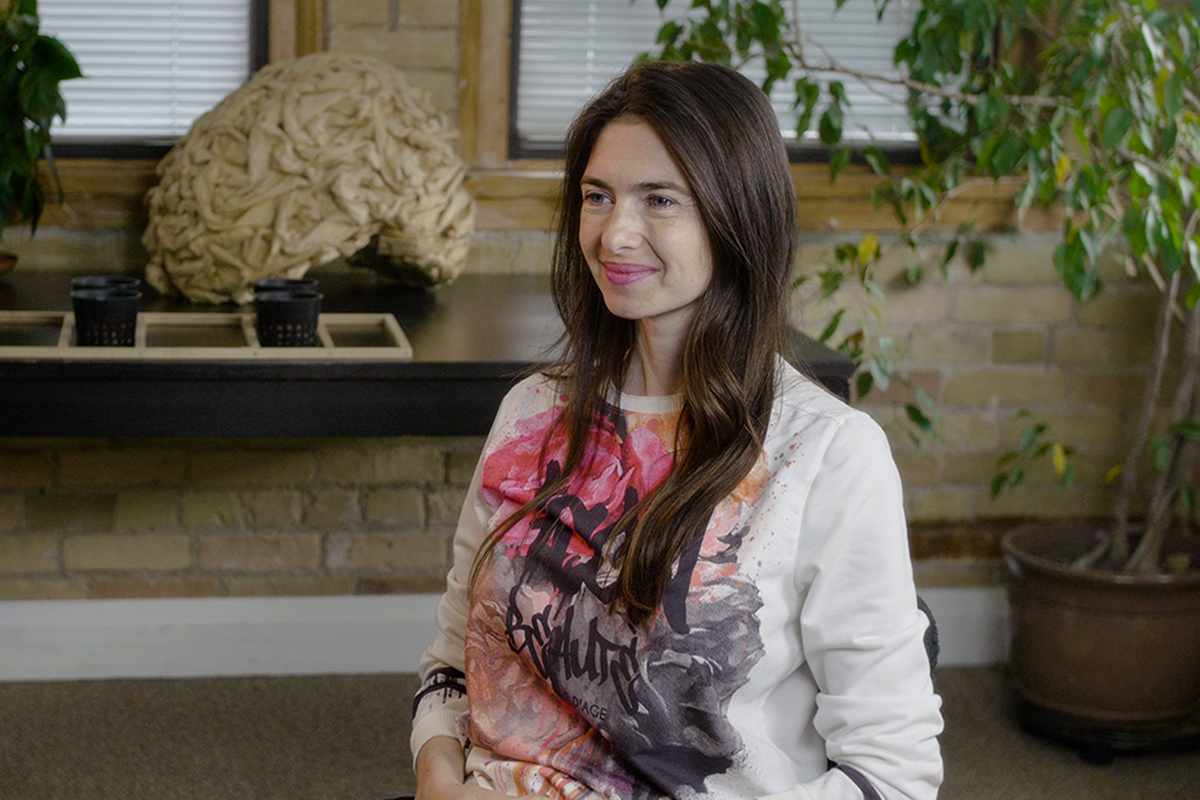
Ajani Charles: That’s awesome. My last question is what gives your life meaning?
It’s a simple question.
Ariel Garten: Wow. Yeah, clearly it’s a philosophy major that I am speaking to.
I don’t want to be glib in answering that. But I don’t think I can answer it as one thing, but the things, plural, that give my life meaning are attempting to make the experience of living better for the people on the planet currently and the people on the planet in the future.
And that means both cultivating relationships with my child, with the people around me, as well as strangers, and my larger community. And in trying to do it and create things that will shift our trajectory, hopefully for the better in the future, for generations to come. That’s my life purpose and meaning.
Ajani Charles: That’s great. Well, this is my first Thrive Global interview ever. So, I think that this is an amazing way to start.
This has been by far one of the most profound conversations I have had this year, so thank you so much for sharing your insights, your life’s experiences, and the different facets of your company with me. I really appreciate it.
Ariel Garten: Thank you. It is my sincere pleasure.

